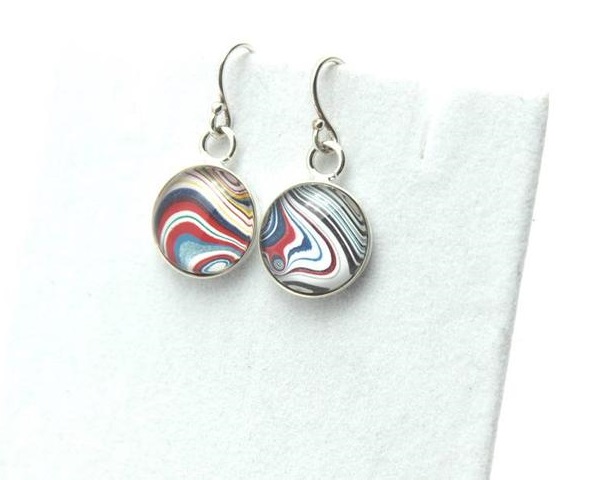From Rust Belt to Wrist Bling

It’s not known with certainty who first found out that Detroit’s discarded detritus was full to bursting with hidden potential but the chain of events isn’t hard to imagine. An auto plant worker, struck by the intricate “book” of color displayed by chips and chunks of raw Fordite, showed some to a friend with experience in lapidary processing used to turn rough Agate into banded cabochons and jewelry settings. Being that automobile paint is meant to last the lifetime of the vehicle and stand up to the worst Mother Nature can throw at it, Fordite is sufficiently rock-like to undergo the same sort of rock-tumbling and polishing.

Thanks to the layering process that forms Fordite in the first place, the results of such processing can be absolutely jaw-dropping! A host of craftsmen (and crafts-women) have dove into the Fordite field full-out, offering a wide range of Fordite jewelry such as rings, pendants, cufflinks, earrings, necklaces, tie tacks and more. The nature of the jewelry offers a number of selling points: the beauty of the processed “gems”, the intimate connection with the auto industry’s golden age, and the growing rarity of the material itself.

Those last two points are salient: modern auto painting is conducted by electrostatic techniques that cause little to no overspray – the metal auto bodies electrically attract the paint resulting in no waste – and no Fordite. In addition, as word of Fordite has spread, scavengers have diligently “mined” the few places where Fordite could be found and the rarer it gets, the more sellers can charge. All in all, it’s good to see some beauty emerge from the post-industrial slag heap, if only for a limited time.





